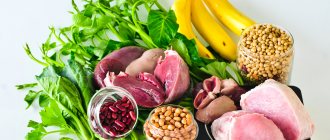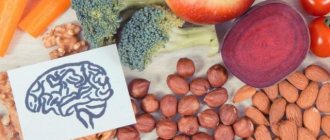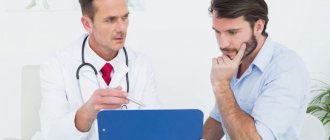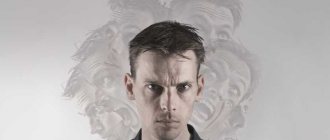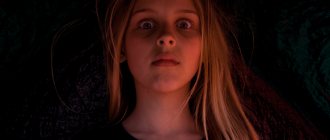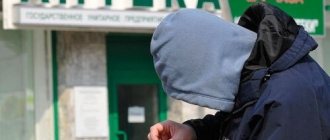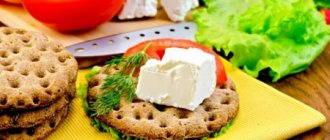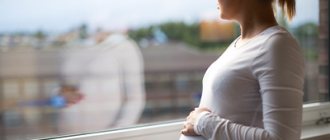Stroke is a dangerous disease that affects the human body, sometimes leading to death. Occurs due to impaired blood circulation in the brain, which causes insufficient oxygen and nutrients. The attack is accompanied by loss of consciousness and paralysis. Most people, approximately 80%, remain disabled for life after a stroke.
Restoring the body after a stroke is a long and complex process. Nutrition, as well as medication, plays a key role in the rehabilitation process. Restoration of lost functions can only occur if the body receives the necessary set of nutrients. Thus, researchers have proven the dependence of the clinical outcome of stroke on the rate and degree of compensation for protein-energy deficiency in the acute period.
Proper nutrition is the basis of a quality life
Everyone knows that the nutrients a person needs for normal functioning come into the body from the outside, that is, with food. Each product has its own effect on the composition of blood, urine, lymph, the functioning of the gastrointestinal tract, metabolism, and the condition of the body’s cells.
It is an incorrect, unbalanced diet that causes various diseases, including stroke. Therefore, if the patient’s taste habits are not changed during the rehabilitation period, a second stroke can be provoked. In the first two years, the risk of relapse varies between 4–14%. Therefore, monitoring nutrition is the primary task of people caring for the patient.
In order for the rehabilitation process to proceed as quickly as possible, it is recommended to make the diet balanced and healthy. Fiber, vitamins, antioxidants, microelements - substances that the body needs for vigor and energy. Particular importance should be given to consuming foods rich in antioxidants - substances that block the harmful effects of radicals that cause damage to blood vessels and cells.
Every patient should understand that restricting the intake of certain foods is not a temporary measure. Proper nutrition will have to become the norm.
Stroke is a pressing problem
Acute cerebrovascular accidents (ACI) are becoming an increasingly pressing problem for most countries of the modern world. Experts from the World Health Organization identify stroke as the most dangerous threat to humanity in the 21st century. A steady increase in the incidence of stroke is noted by specialists from developed and developing countries.
In Russia, every year more than 400 thousand people end up in a hospital bed as a result of a “brain stroke.” The exact number of patients left at home after a stroke in the care of loved ones is unknown. Unfortunately, a multi-level system of rehabilitation treatment (intensive care ward - neurological department - rehabilitation department - sanatorium) is not always available to many people who have suffered from a stroke. Therefore, in most cases, patients go home directly from the hospital.
Very often, such patients suffer from immobility (paralysis), speech disorders, and swallowing disorders. The problem of bowel cleansing is very typical during this period. Very often, after a stroke, patients experience infectious complications: pneumonia, bronchitis, cystitis, pyelonephritis. Prolonged forced positioning in bed leads to the formation of bedsores (skin damage as a result of pressure and malnutrition).
As a rule, upon discharge from the hospital, patients receive a treatment program that is aimed at correcting blood pressure and preventing the formation of blood clots inside the vessels. Sometimes the doctor will recommend one of the medications to “improve brain function.” But this is not enough for the effective and safe recovery of the body after a serious illness that affects not only the brain, but also the entire cardiovascular system, gastrointestinal tract, excretory organs, and immune system. Suffering of all organs and systems of the body after a stroke is the rule, not the exception. This is due to two important circumstances:
- the overall severity of the disease, which leads to long-term and intensive treatment with the use of a large number of medications against the background of numerous complications and
- disruption of the control and regulatory influence of the damaged nervous system on the functioning of the liver, stomach, intestines, lungs, etc.
In conditions of intensive treatment, a relatively short stay of the patient in the hospital, overload of medical personnel, these circumstances are often beyond the attention of doctors. But the final outcome of the disease largely depends on this.
Features of eating after a stroke
Anyone who has had a stroke is very weak at first. The process of eating and even drinking requires enormous effort from the patient. At first, about three weeks after the attack, the patient is fed in a supine or semi-lying position. You should start with rare homogeneous food: pureed viscous porridges and soups, vegetable purees, etc. After three days, the diet can be expanded. You can feed the patient in the following ways:
- Traditional - using a spoon and a sippy cup. Suitable for patients who still have food reflexes after an attack.
- Enteral - performed using a probe. It is prescribed for those who have impaired swallowing and chewing reflexes and whose digestive organs function normally. Enteral nutrition in the early stages can effectively solve the problem of “empty intestines.”
- Parenteral - administration of special solutions enriched with vitamins and microelements intravenously. It is usually prescribed in the first days after an attack, and also if the patient has impaired food reflexes and gastrointestinal function.
Your doctor will tell you which method of nutrition is best for a person who has had a stroke. Sometimes patients after a stroke refuse to eat. This is caused by depression, which accompanies many victims. In this case, medical personnel force-feed the patient using a tube. Through it, nutrients enter the body.
When the patient gets a little stronger, he can be transferred to eating food on his own. During this period, you can massage the hands, supplementing it with special gymnastics, strengthening the upper limbs, teaching the patient to independently hold a spoon, cup, and other utensils.
What vitamins should I take?
Along with taking blood-thinning and nootropic drugs (improving cerebral circulation), the patient is usually recommended to take a vitamin course and carefully monitor proper nutrition. Vitamins are needed to maintain the functioning of the brain after a stroke and the whole body. It has been proven that all of the vitamins listed below restore blood circulation to the affected organ. But they must be taken in certain doses, which are determined by the attending physician, based on the clinical picture and complications:
| Vitamin A | Favors the normal growth of new cells and tissues, therefore it is very effective in treating the consequences of a stroke. However, it is necessary to take the vitamin with caution and strictly adhere to the prescribed dosage, otherwise unpleasant side effects may occur: sleep disturbance, vomiting, nausea. Vitamin A is present in the following foods: |
| hard cheese; | |
| egg yolk; | |
| orange fruits and vegetables; | |
| grape; | |
| dairy products; | |
| kidneys and liver. | |
| B vitamins | Without these vitamins, it is difficult for the body to function properly. They normalize blood pressure, restore nerve cells, and improve blood circulation in the affected areas of the brain. Optimal sources of B vitamins are: |
| bran; | |
| walnuts; | |
| fish products; | |
| peas; | |
| carrot; | |
| spinach; | |
| asparagus; | |
| broccoli; | |
| seeds of wheat. | |
| Vitamin C | Increases the elasticity of blood vessels and restores them. Prevents pathogenic microflora from entering the body and multiplying in it. Ascorbic acid is found in the following products: |
| citrus; | |
| blueberry; | |
| raspberries; | |
| kiwi; | |
| watermelon; | |
| potato; | |
| cauliflower; | |
| rose hip; | |
| currant; | |
| tomatoes; | |
| apples. | |
| Vitamin P | Promotes the economical use of ascorbic acid by the human body. It can be found in large quantities in buckwheat. |
| Vitamin D | Participates in the regeneration of body cells after a violation of cerebral circulation (that is, in the brain). It monitors the normal composition of the blood and has a beneficial effect on nerve cells. Vitamin D is found in foods of animal origin: |
| hard cheese; | |
| butter; | |
| fish fat; | |
| fish. | |
| Vitamin E | Significantly reduces the severity of brain damage. It can be found in the following products: |
| olives; | |
| nuts; | |
| liver; | |
| oat groats; | |
| vegetable oil; | |
| soy; | |
| greenery; | |
| milk; | |
| eggs; | |
| sea fish. | |
| Vitamin K | Improves blood circulation. Cabbage and leafy vegetables contain it in large quantities. |
Principles of nutrition for a patient after a stroke
- food should be easily digestible - the body needs to expend energy on recovering from illness, and not on digesting food;
- food should be highly nutritious, while low in calories - the basis for rapid recovery after an attack;
- preference should be given to products that do not contain cholesterol;
- you cannot eat hot or cold food, dishes should be at room temperature or warm, then they are digested faster;
- you need to drink 1.5–2 liters of fluid per day to maintain the correct water-salt balance;
- The portion size should be reduced and the number of meals increased;
- Avoid drinking alcohol and smoking.
The general meaning of all recommendations regarding the organization of nutrition for post-stroke patients is a slight reduction in calories from fats and carbohydrates. After all, excess body weight is a scientifically proven risk factor that can lead to a recurrent stroke.
In addition, all substances that stimulate the cardiovascular and nervous systems are significantly limited. Preference is given to products with a high content of potassium, magnesium, and lipotropic substances. Products that have an alkalizing effect will also be useful, which has a beneficial effect on speedy recovery from inflammatory processes.
What is prescribed for strokes
Some of the drugs are indicated for use in complex therapy of hemorrhage or thrombosis of a cerebral vessel.
Vikasol
The main active ingredient of the drug is sodium menadione bisulfite. This is synthetic vitamin K. The drug belongs to the class “Hemostatics and coagulants”.
The drug is available in tablet and injection form for intramuscular administration. The main component of Vikasol is involved in the synthesis of thrombin, which helps stop bleeding in hemorrhagic stroke.
A drug for stopping acute bleeding in the brain is administered in the early period of pathology at the stage of transporting the patient to the intensive care unit.
Treatment continues in the hospital. For hemorrhagic stroke, administration of 1 ampoule of the drug intramuscularly once a day is indicated. After stabilization of the condition and during the rehabilitation period, the doctor transfers the patient to Vikasol tablets.
Effective dosages for strokes are calculated individually based on the severity of the process.
The standard regimen for the tablet form of the drug is 30 mg 3 times a day for 4 days. Then a break of 4 days is required. Further treatment is carried out according to indications. The maximum possible dose per 1 dose in adult patients is 60 mg.
Contraindications to the use of Vikasol:
- individual sensitivity;
- thromboembolism - a specific condition during ischemic stroke, when blockage of blood vessels in the brain occurs;
- increased blood viscosity;
- liver failure;
- pregnancy;
- disruption of the production of digestive enzymes.
When using Vikasol, individual intolerance to the main component of the drug may develop. This manifests itself in the appearance of a rash, urticaria, and in severe cases bronchospasm develops. In this case, use of synthetic vitamin K should be discontinued.
B vitamins: neurovitan, neurobion and analogues
This class of drugs belongs to the group “Neuroprotectors” and contains substances that protect brain cells during the development of a stroke. Their purpose is indicated as part of complex therapy.
Neurovitan is produced only in tablet form. This drug contains octothiamine, pyridoxine, cyanocobalamin, riboflavin, that is, the necessary B vitamins in full.
The drug is prescribed during the rehabilitation period, since in the acute period injectable forms of B vitamins are used.
The main indication for the use of Neurovitan, Neovitam, Neurobion and their analogues is the treatment of diseases accompanied by impaired nerve conduction of fibers, including stroke.
Drugs are not prescribed in the following cases:
- individual sensitivity;
- any history of allergies not related to B vitamins;
- ulcerative lesions of the duodenum;
- thromboembolism, increased levels of hemoglobin and red blood cells in the blood.
WE RECOMMEND SEEING: Why seizures occur during a stroke
Effective dosages are calculated individually based on the patient's diagnosis and the severity of the stroke. It is recommended to take from 1 to 4 tablets per day. On average, 1 tablet is prescribed 2 times a day.
The vitamin complex can cause a number of negative reactions. If side effects occur, you should stop taking the drug and inform your doctor.
There may be:
- feeling of sand in the eyes, itching;
- weakness;
- changes in heart rate and pressure;
- temperature increase;
- nausea and dry mouth;
- in severe cases - anaphylaxis, shock.
Complex drug "Aevit"
The main components of the complex are retinol and alpha-tocopherol acetate. The drug is produced in tablet form and in the form of a fatty solution for injection.
The components of the drug have an immunomodulatory, antioxidant effect, and stimulate capillary blood circulation. Indications for the use of this complex are various pathologies of the nervous system and impaired tissue trophism.
The drug is not prescribed in the following cases:
- hyperthyroidism;
- individual intolerance;
- severe kidney pathologies;
- heart attack
Standard dosages of the drug depend on its dosage form. If the use of the solution for infections is indicated, then it is prescribed 1 ampoule 1 time per day. Course duration is from 20 to 40 days. Tablets are taken 1 pc. 1 time per day for a month. Repeated use of "Aevit" is indicated only six months after the previous course.
The drug rarely causes side effects, but they are extremely unpleasant. Therefore, the drug should be discontinued if the following pathological processes are observed:
- severe forms of dyspepsia – nausea, vomiting, diarrhea simultaneously;
- alopecia – hair loss not associated with other diseases;
- seborrhea;
- inflammatory processes in the gastrointestinal tract;
- individual intolerance;
- exacerbation of diseases of the liver and bile ducts.
Homeopathy, dietary supplements and other remedies
Classical homeopathy suggests using only 1 drug to treat diseases. But recovery after a stroke requires the use of complex means.
What homeopaths offer:
- Ubiquinone compositum;
- Cerebrum compositum;
- Aesculus compositum.
Doctors of classical medicine question the effectiveness of these remedies. But if any homeopathic medicine improves a patient’s general condition, then it should be recommended by the specialist who treated him in the hospital and monitors him after the main course of therapy. Self-administration can lead to dire consequences.
Dietary supplements are drugs that have not undergone formal testing and testing using control groups. No doctor can guarantee a positive result from taking such drugs. Although it is customary to extol their beneficial, but unproven properties.
Don’t search the Internet for “what vitamins to take after a stroke.” Disturbances in the cerebral circulatory system should be treated by an experienced specialist. And it is the doctor who will prescribe the vitamin complex that a particular patient requires based on the diagnosis, general condition and degree of damage to brain activity.
What you can and cannot eat after a stroke
A balanced diet will help replenish the body with the micro- and macroelements necessary to restore health, as well as vitamins. The diet should consist of the following products:
- Vegetables, fruits - the maximum amount of vitamins. You need to consume about 400 grams every day. You can eat carrots, eggplants, different varieties of cabbage, zucchini, tomatoes, cucumbers, potatoes, beets, pumpkin, peppers, and herbs. Fruits - plums, apples, peaches, apricots, bananas (rich in potassium, help restore blood vessels). Natural products are preferably consumed boiled or baked, less often raw.
- Drinks - natural juices, fruit drinks, compotes, herbal decoctions, rosehip infusion, green and weak black tea - are now table favorites.
- Dairy products. Fermented milk dishes, cottage cheese (you can make casseroles, cheesecakes, dumplings) will help you forget about constipation. Avoid taking fatty dairy products: condensed milk, cream, cheeses. Milk-based products can be consumed a couple of times a week.
- Low-fat boiled fish. Can be included in the diet 2-3 times a week. The choice is worth stopping at salmon, mackerel, sardine, pike, cod, perch, navaga, and flounder.
- Meat. Promotes the regeneration of nerve cells, helps gain muscle mass. You can eat dietary meat of turkey, rabbit, chicken, as well as veal.
- Eggs. About 3-4 pieces per week.
It is also worth remembering that products that require heat treatment are best boiled or baked. Can be steamed. Fried foods should not be consumed.
Boil soups and borscht only with vegetable broth. Soups made from legumes, as well as soups with meat and fish broths, are excluded.
Porridges and vegetables can be seasoned with vegetable oils.
For piquancy, it is permissible to add seasonings to dishes - mint, rosemary, parsley, bay leaf, lemon, suneli hops, crushed and dried black currant leaves, cherries, seeds, nuts, honey, jam.
For sweets you can use biscuits and marmalade, if bread, then only grades I and II.
Tocopherol, or vitamin E
An effective way to get your daily dose of tocopherol is to eat seeds, nuts and vegetable oils daily. But the need for the vitamin is enhanced by the large amount of polyunsaturated fatty acids in the diet, which are found in sea fish and seafood.
Strengthening immune function with tocopherol occurs by increasing the antioxidant protection of cell membranes. It enhances the body's ability to resist the destructive effects of harmful environmental factors and viruses. This vitamin helps increase the production of antibodies and also blocks the proliferation of tumor cells. Most often, its effect is enhanced by ascorbic acid and retinol, which together form an antioxidant complex.
It is worth giving up:
- salted, pickled and pickled vegetables;
- mayonnaise, various sauces;
- fried and smoked products;
- fatty meat and dairy dishes;
- sausages, sausages;
- fats of animal origin;
- red and black caviar;
- meat and fish broths;
- baked goods, cakes;
- coffee, cocoa, chocolate;
- radishes, radishes, garlic, onions, mushrooms;
- hot spices, mustard, pepper, horseradish.
It is strictly not recommended to overeat or deviate from the diet. Failure to comply with nutritional rules can significantly delay the moment of recovery and cause the development of a second attack.
How to choose a diet after a stroke?
The most common diets after a stroke are: anti-sclerotic, Table No. 10 according to Pevzner. The choice of diet after a stroke should be determined not only by the patient’s personal taste preferences, but also by the type of stroke suffered. If the stroke was caused by arterial hypertension, then special attention should be paid to excluding fatty and salty foods, strong coffee and tea from the menu. If the stroke you suffered was ischemic, then you should avoid fatty, fried foods, as well as foods that provoke the development of atherosclerotic lesions of the vascular walls.
The principle of eating, regardless of the chosen diet option, should be as follows:
- breakfast - an hour after the patient wakes up;
- each subsequent meal at an interval of three hours;
- dinner - two hours before going to bed.
The duration of rehabilitation after a stroke depends on the severity of the disease and the timeliness of therapy.
If the patient has a positive attitude, believes in himself, and follows all the doctor’s recommendations, the result will not be long in coming. The task of family and friends is to help and support the patient in every possible way, to instill in him confidence in his own abilities. In contact with
What is needed for recovery
- Retinoids are a set of compounds better known as vitamin A. Substances of this group accelerate regeneration processes in body tissues, have an antioxidant effect, participate in the production of interferon, and strengthen the body’s own defenses. In addition, vitamin A is involved in the synthesis of taurine. This connection is responsible for the transmission of nerve impulses.
- B vitamins. This broad class of substances is called brain vitamins. They participate in energy metabolism and the processing of nutrients supplied with food. A lack of B vitamins causes anemic processes, which after a stroke has an extremely negative effect on all tissues of the body.
When a cerebral hemorrhage occurs, some of the nerve ganglia die. Vitamins B6 and B12 are involved in the processes of growth and regeneration of nervous tissue. These substances are indispensable in the treatment of neurological disorders.
- Vitamin D. A lack of this substance in the diet leads to the development of fragility of the vascular wall. The result is hemorrhages in various tissues, including the brain. In addition, there is a connection between a lack of vitamin D and excess weight, the process of formation of cholesterol plaques on the walls of blood vessels. Both excess weight and elevated levels of cholesterol in the blood are factors that provoke the development of stroke.
- Vitamin E is a powerful antioxidant and antihypoxant. Prevents the development of oxygen starvation of body cells. A deficiency of this substance can cause softening of brain tissue. This condition is especially dangerous for the cerebellum. This area is responsible for motor activity and coordination in space. With a lack of vitamin E, ataxia develops - a neuromuscular disorder, impaired coordination of movements. This will complicate rehabilitation in the post-stroke period.
- Vitamin K. Deficiency of this substance causes blood clotting disorders. This provokes the development of extensive internal bleeding.
- Vitamins C and P strengthen the vascular walls of small capillaries, restore blood circulation, and strengthen overall immunity.
WE RECOMMEND WATCHING: Successful memory recovery after a stroke
This is a list of necessary compounds that improve the condition both during a stroke and during the rehabilitation period. You can get the necessary microelements and vitamins from foods, but this is not enough for high-quality recovery after a cerebral infarction. It is more advisable to add specialized vitamin complexes to the diet.
